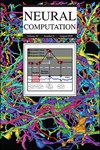利用膜片钳和高密度微电极阵列构建单神经元模型的多模态拟合方法
IF 2.7
4区 计算机科学
Q3 COMPUTER SCIENCE, ARTIFICIAL INTELLIGENCE
引用次数: 0
摘要
在计算神经科学中,多室模型是单个神经元在生物物理上最逼真的表征之一。构建此类模型通常需要使用膜片钳技术记录不同实验条件下的体电压信号。然后利用实验数据来拟合模型的许多参数。虽然对体细胞进行贴片是目前建立多室模型的黄金标准方法,但一些研究也证明树突和轴突部分具有丰富的动态变化。仅从体节记录很难观察到非配体区室的活动并对其进行正确的参数化。为了提供更丰富的数据集作为多区室模型的输入,我们在此研究了体细胞膜片钳记录与高密度微电极阵列(HD-MEAs)记录的结合。HD-MEAs 能够以亚细胞分辨率观察细胞外电位和神经元区室的神经活动。在这项工作中,我们引入了一个新颖的框架,将膜片钳和 HD-MEA 数据结合起来构建多室模型。我们首先在一个已知参数的真实模型上验证了我们的方法,结果表明,除了使用细胞内特征外,还使用从细胞外信号中提取的特征,能产生比单独使用细胞内特征更好的拟合模型。我们还利用实验数据,通过体外细胞培养构建细胞模型,演示了我们的程序。我们提出的多模态拟合程序有可能增强计算神经科学领域的建模工作,并为该领域提供更逼真、更可验证的神经元模型。本文章由计算机程序翻译,如有差异,请以英文原文为准。
A Multimodal Fitting Approach to Construct Single-Neuron Models With Patch Clamp and High-Density Microelectrode Arrays
In computational neuroscience, multicompartment models are among the most biophysically realistic representations of single neurons. Constructing such models usually involves the use of the patch-clamp technique to record somatic voltage signals under different experimental conditions. The experimental data are then used to fit the many parameters of the model. While patching of the soma is currently the gold-standard approach to build multicompartment models, several studies have also evidenced a richness of dynamics in dendritic and axonal sections. Recording from the soma alone makes it hard to observe and correctly parameterize the activity of nonsomatic compartments. In order to provide a richer set of data as input to multicompartment models, we here investigate the combination of somatic patch-clamp recordings with recordings of high-density microelectrode arrays (HD-MEAs). HD-MEAs enable the observation of extracellular potentials and neural activity of neuronal compartments at subcellular resolution. In this work, we introduce a novel framework to combine patch-clamp and HD-MEA data to construct multicompartment models. We first validate our method on a ground-truth model with known parameters and show that the use of features extracted from extracellular signals, in addition to intracellular ones, yields models enabling better fits than using intracellular features alone. We also demonstrate our procedure using experimental data by constructing cell models from in vitro cell cultures. The proposed multimodal fitting procedure has the potential to augment the modeling efforts of the computational neuroscience community and provide the field with neuronal models that are more realistic and can be better validated.
求助全文
通过发布文献求助,成功后即可免费获取论文全文。
去求助
来源期刊

Neural Computation
工程技术-计算机:人工智能
CiteScore
6.30
自引率
3.40%
发文量
83
审稿时长
3.0 months
期刊介绍:
Neural Computation is uniquely positioned at the crossroads between neuroscience and TMCS and welcomes the submission of original papers from all areas of TMCS, including: Advanced experimental design; Analysis of chemical sensor data; Connectomic reconstructions; Analysis of multielectrode and optical recordings; Genetic data for cell identity; Analysis of behavioral data; Multiscale models; Analysis of molecular mechanisms; Neuroinformatics; Analysis of brain imaging data; Neuromorphic engineering; Principles of neural coding, computation, circuit dynamics, and plasticity; Theories of brain function.
 求助内容:
求助内容: 应助结果提醒方式:
应助结果提醒方式:


